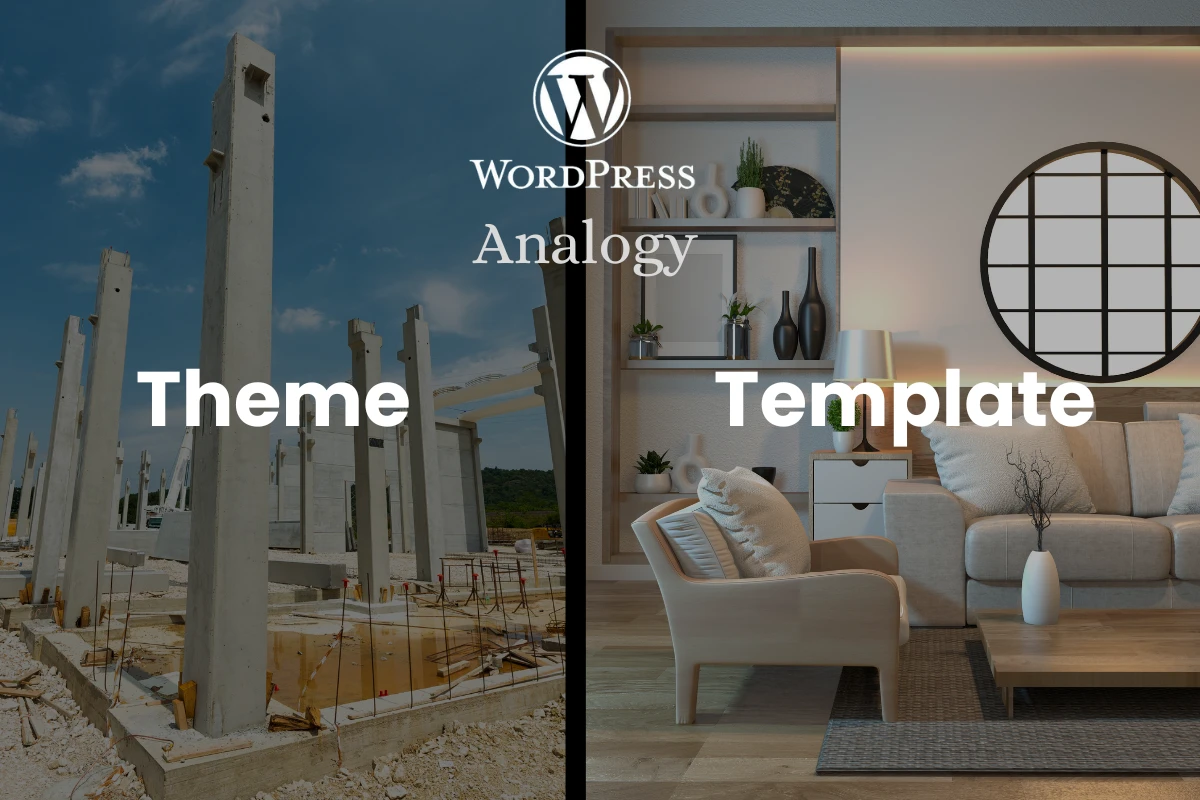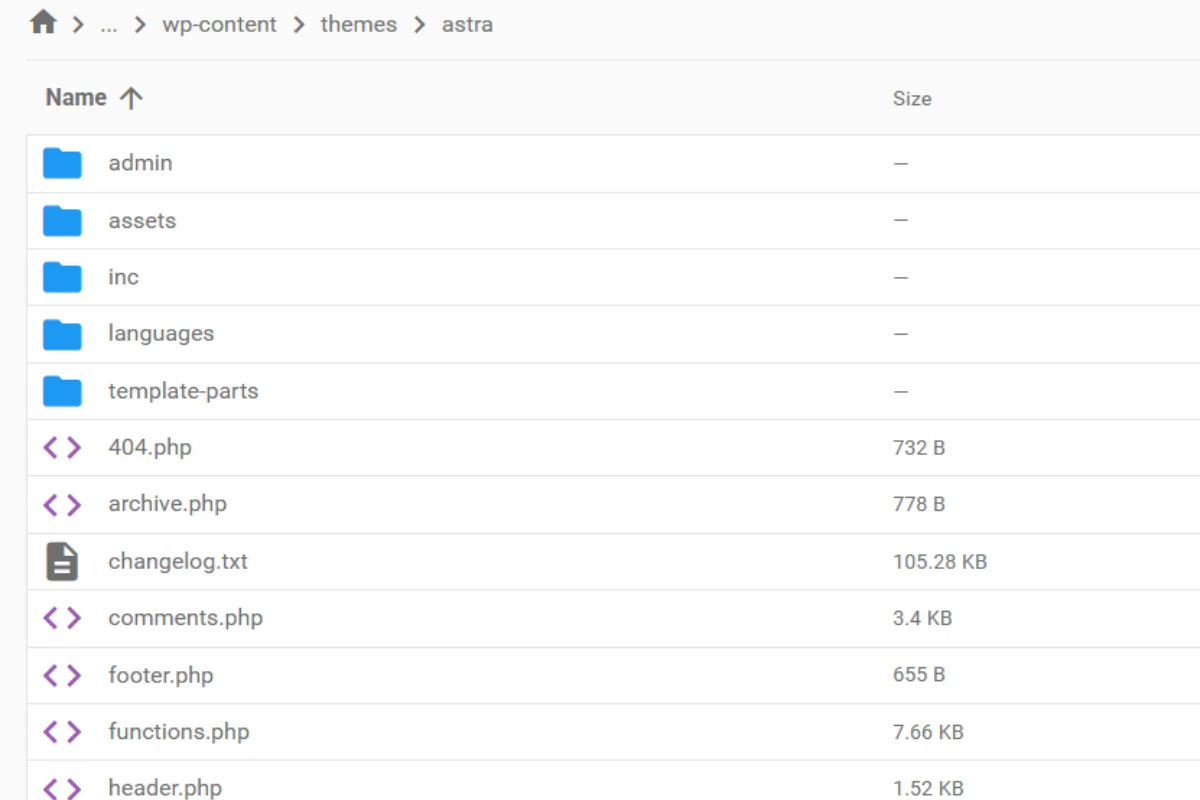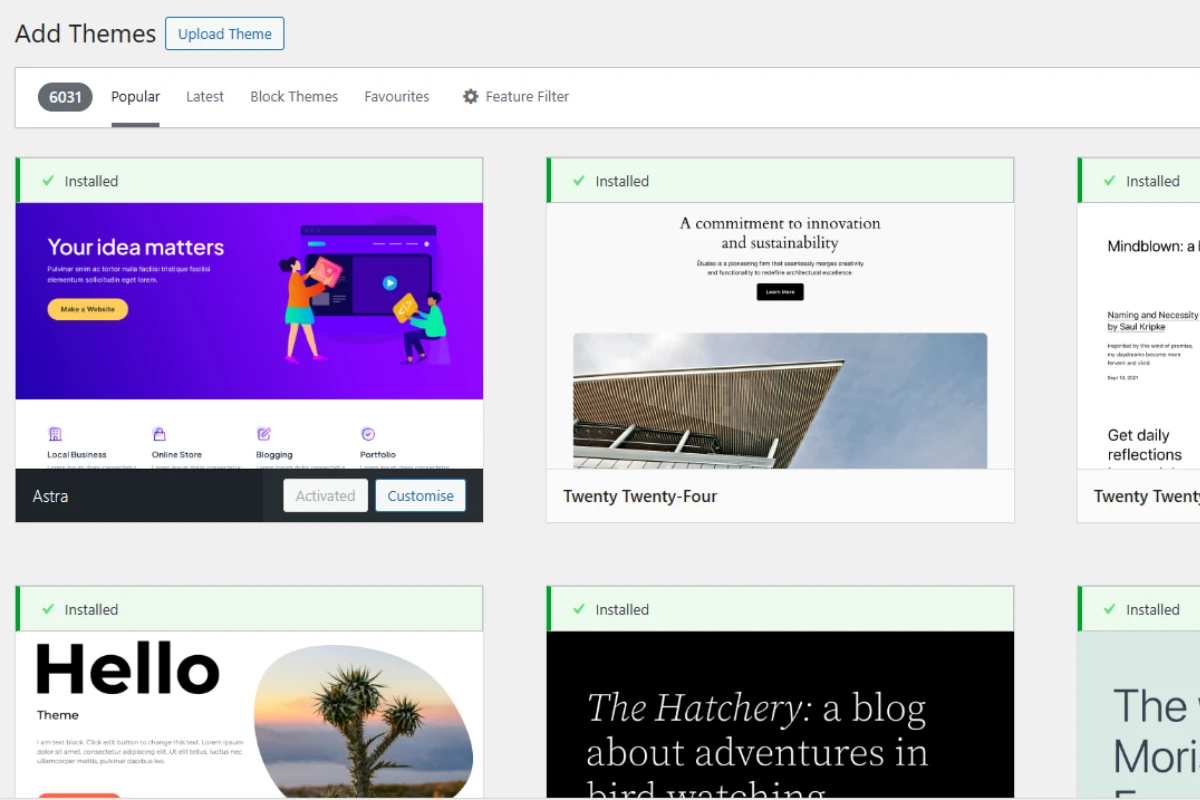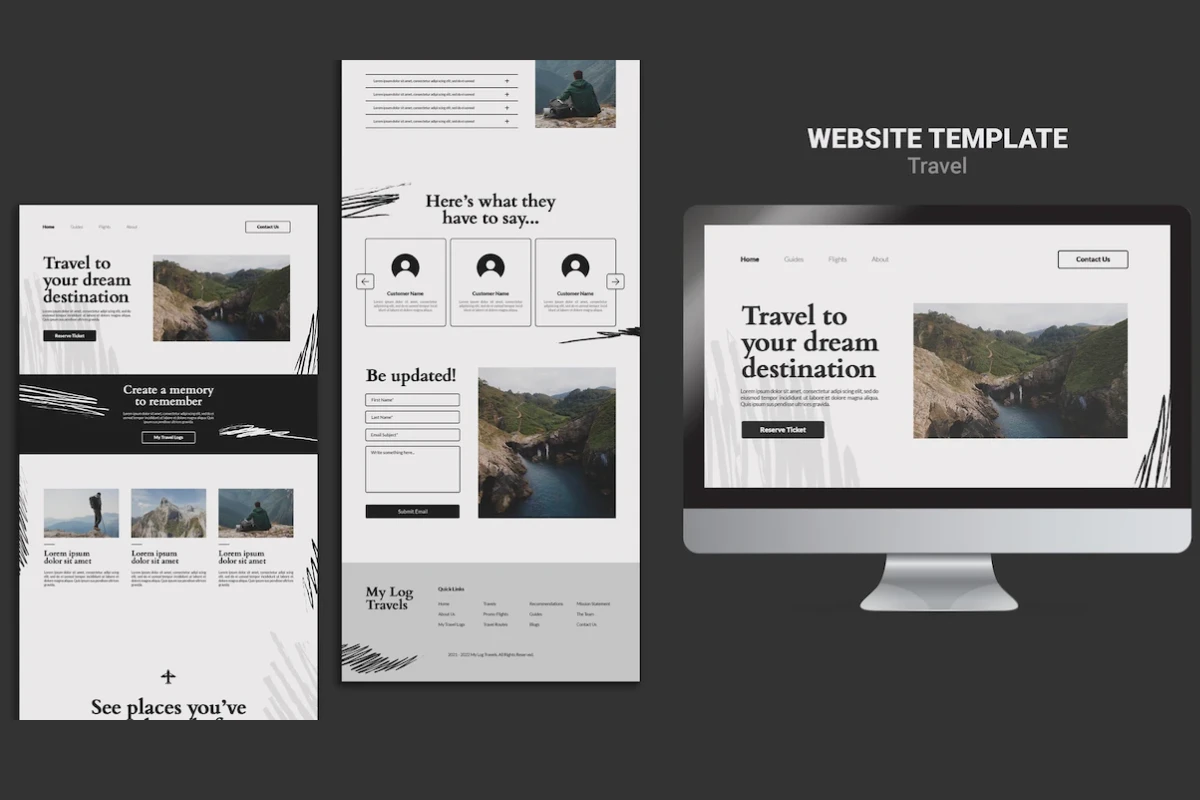
In the dynamic landscape of web design, terminologies can sometimes become muddled and confusing. Take, for instance, the terms “themes” and “templates” in the WordPress ecosystem. While they might sound synonymous to the untrained ear, they have distinct roles and functions.
Many newcomers to WordPress, and even some who have been around for a while, often conflate the two. At WPSiteMakers, we’ve encountered situations where clients perceive themes as just another set of templates ready to be applied to their sites. However, this understanding just skims the surface.
As we delve deeper into this topic, our aim is to demystify these concepts. We’re here to ensure you grasp the nuances between themes and templates, empowering you to make the best choices for your website endeavors.
Understanding WordPress Themes
A WordPress theme can be envisioned as the foundational structure of a website, much like the framework of a house. While it’s easy to perceive a theme as merely a design, it’s fundamentally much more encompassing. Themes determine not just the visual aesthetics but also the functionality, layout, and sometimes even the behavior of elements on a website.
Diving into the technical side, a WordPress theme consists of numerous files and folders. These files, mainly written in PHP, HTML, and CSS, collaborate to produce the visual interface and functionalities we see on the front end. Some themes come with pre-built designs and demos, allowing users to swiftly launch a site with minimal setup. Others offer a blank canvas, granting users the freedom to craft their design from scratch.

For instance, themes like “Divi” or “Astra” are known for their versatility, offering a plethora of customizable design options and built-in features. On the other hand, themes such as “Twenty Twenty-One” prioritize simplicity and user-friendliness, making them ideal for beginners.

While the WordPress theme repository provides a vast collection of free themes, there’s also an expansive market for premium themes that often come with enhanced features, dedicated support, and frequent updates. Whether you opt for a free theme from the official collection or invest in a premium one, the key is to find a theme that resonates with your brand’s identity and your website’s objectives.
Delving into WordPress Templates

While a theme sets the overall aesthetic and functionality of a WordPress website, templates work on a more granular level. If we liken a theme to the foundational structure of a house, then templates can be compared to the individual rooms or sections within that house.
At its core, a WordPress template is a file that dictates how a specific portion of your website is displayed. For instance, while the theme will determine the overarching design principles like color scheme and typography, templates take charge of specific layouts – be it for a homepage, a blog archive, a single post, or a contact page.
To further elaborate using our analogy: if the theme is the entire architectural design of a home, templates would be the blueprint for the living room, kitchen, or the master bedroom. They define where your “furniture” (content) goes, ensuring everything fits harmoniously.
For users looking to provide distinct appearances or functionalities for different sections of their site, understanding and sometimes even customizing these templates can be invaluable. This nuanced control ensures that each segment of the site aligns perfectly with the content it presents and the user experience it aims to offer.
Key Differences Between Themes and Templates
In the vast world of WordPress design, both themes and templates play critical roles. Yet, they function at different capacities. Understanding the distinction between them is crucial for anyone working with WordPress. Here are some of the primary differences:
- Scope and Role:
- Themes: Think of themes as the grand stage setting for a play. They establish the overall design, functionality, and style of a WordPress website. Themes are the comprehensive package, encapsulating multiple templates and determining how the website appears as a whole.
- Templates: On the other hand, templates are like the individual scenes in that play. They focus on particular sections of your site, determining how specific types of content are displayed, such as individual blog posts or pages.
- Size and Complexity:
- Themes: As you rightly pointed out, themes are more extensive, often containing several files and folders. Their size can indeed go up to 100 MB or more, depending on the features, integrations, and assets they include.
- Templates: Templates are simpler, with sizes ranging around 2 MB to 5 MB in general. They focus on individual aspects and are, by nature, less complicated than full-blown themes.
- Installation:
- Themes: Installing a theme is a significant commitment as it changes the entire look and feel of your website. It might come with additional settings, widgets, or customizers that you need to configure.
- Templates: Installing or changing a template is a more straightforward process. As they’re concerned with specific parts of a site, there’s less to configure overall.
- Customizability and Versatility:
- Themes: Themes offer a broader range of customization, allowing users to tweak everything from color schemes to typography. They can also introduce new functionalities through built-in plugins or widgets.
- Templates: While templates can be customized, their flexibility is confined to the specific section they handle. For example, modifying a blog post template won’t affect how a portfolio page appears.
- Interdependence and Independence:
- Themes: Themes encapsulate a collection of templates. When you activate a theme, it brings along its set of templates that work in tandem to provide a cohesive user experience.
- Templates: They can operate independently of the theme, but within the framework the theme provides. You might have a theme activated but choose to use a different template for a specific page or post type.
In essence, while themes set the global ambiance of your website, templates fine-tune individual sections. Recognizing their unique roles and interplay is pivotal in harnessing the full potential of WordPress design.
Why Does It Matter?
In the grand scheme of website design and development, understanding the nuances between themes and templates might seem trivial to some. However, it’s this very distinction that can determine the success and adaptability of your WordPress site. Here’s why this understanding is paramount:
- Effective Customization:
- By discerning between themes and templates, users can precisely target areas of their website for modification. Whether you wish to revamp the entire site or only tweak a specific page’s layout, recognizing the difference ensures you’re modifying the right component.
- Optimal Performance:
- While themes give your site its foundational design structure, overloading it with unnecessary functionalities can slow down your site. Knowing when to use a lightweight template versus a feature-rich theme can balance aesthetics and performance.
- Efficient Troubleshooting:
- Encountering an issue on your website? Pinpointing the problem becomes easier when you understand its origin. Is it an issue with the overall theme or a specific template? Recognizing the difference can save time during debugging.
- Avoiding Unintended Changes:
- Confusing a theme with a template can lead to unintended design changes. For instance, if you think you’re merely changing a template for your blog posts but end up switching themes, your entire website’s look and feel can unintentionally shift.
- Budget and Resources:
- Premium themes and templates come at a cost. Knowing what you specifically need – be it a comprehensive design overhaul or a slight page modification – ensures you invest wisely. Plus, understanding their roles can help in deciding whether to hire a professional for theme development or a simple template design.
- Streamlined Communication:
- When discussing your website with designers, developers, or even colleagues, using the correct terminology ensures everyone’s on the same page. Misunderstandings can lead to wasted resources and time.
In conclusion, grasping the distinction between themes and templates isn’t just about semantics; it’s about maximizing the functionality, design, and efficiency of your WordPress website. Making informed decisions, avoiding costly mistakes, and ensuring optimal site performance all hinge on this understanding.
Choosing the Right Theme and Customizing with Templates
When embarking on the journey of creating or revamping a WordPress site, selecting the right theme and then using templates for customization is crucial. Here’s a roadmap to guide you through this process based on insights and common practices:
- Start with a Vision:
- What’s the purpose of your site? Whether you’re setting up an e-commerce platform, a personal blog, a portfolio, or a corporate site, your website’s purpose will largely dictate the type of theme you need.
- Exploring Themes:
- Within WordPress, there’s a vast ocean of themes available. Navigate to Appearance -> Themes -> Add New and you’ll find a myriad of options. For those who’ve sourced themes externally, perhaps from sites like ThemeForest or Envato, simply upload the theme to WordPress.
- When considering third-party developers, ensure the theme’s coding is clean, it’s regularly updated, and it has good reviews.
- Prioritize Responsiveness and Compatibility:
- In today’s digital age, people access websites from an array of devices. Ensure your theme is responsive, so it looks great on desktops, tablets, and mobiles alike. Also, check its compatibility with major browsers.
- Customization with Templates:
- Templates in WordPress allow you to dive deeper into customization without altering your theme’s core design. Many plugins, like Elementor or WPBakery, offer a suite of templates to spruce up specific sections or pages of your site.
- When choosing templates, it’s pivotal to pick those that align with your site’s overall aesthetic and functionality. For example, a template perfect for a photography site might not suit a law firm’s website.
- Balancing Aesthetics with Functionality:
- Themes like Astra or Twenty Twenty-Two are known for their simplicity. While they might appear basic initially, coupling them with the right templates can transform them into robust, visually appealing sites.
- Always ensure that your theme and template combination doesn’t just look good but also provides a seamless user experience. Avoid overly complex designs that may confuse visitors.
- Trial and Adapt:
- Your first theme or template choice might not always be the perfect fit, and that’s okay. WordPress’s beauty lies in its flexibility. Test different combinations, preview them, and adjust based on feedback and performance.
In the end, the perfect website design is one that resonates with your brand, offers an intuitive user experience, and meets your site’s objectives. Whether you’re a seasoned developer or a WordPress newbie, the combination of the right theme and effective use of templates can turn your website vision into reality.
Conclusion
Navigating the world of WordPress can initially seem like traversing a maze. With a multitude of options, terminologies, and tools available, the distinctions between elements like themes and templates can become blurred. However, understanding these intricacies is pivotal. Themes set the overarching design and functionality of your website, acting as its foundational blueprint. Templates, on the other hand, offer specialized customization for different sections, allowing for a deeper level of personalization.
By discerning between these two elements, website creators can better harness the power of WordPress, crafting sites that are not just visually appealing but also functionally robust. Remember, it’s not about using the most complex theme or the flashiest template; it’s about choosing the right tools that align with your website’s goals and your audience’s needs. Whether you’re a seasoned developer or just starting, keeping the essence of your brand and the needs of your visitors at the forefront will ensure your WordPress journey is both enjoyable and successful.
Thank you for accompanying WPSiteMakers on this insightful exploration. Here’s to creating impactful websites that truly resonate!



Pingback: Can You Create Beautiful Websites with WordPress? – WordPress Site Makers
Pingback: Mixing and Matching: Can You Combine Multiple Templates in WordPress? – WordPress Site Makers